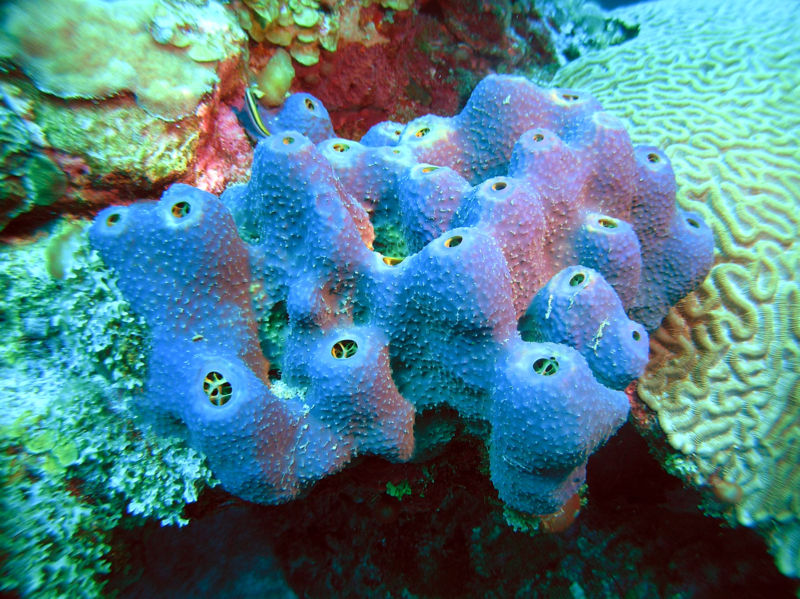
Scientific advancements have led to the introduction of many new chemicals into daily life. Unfortunately, along with their benefits, some of those chemicals have brought problems with toxicity. One group of chemicals that has faced this challenge is called polybrominated diphenyl ethers (PBDEs); they have been widely used as fire retardants but are now restricted due to their toxicity and tendency to accumulate in organisms.
Surprisingly, these complicated chemicals are also made naturally. In some cases, the natural compounds actually exhibit higher toxicity than their man-made counterparts. These naturally occurring chemicals are found across all levels of the marine food-chain, from cyanobacteria to whales, and they have also shown up in humans.
Oddly, most of the chemicals come from sponges that live in the tropics. PBDEs can account for more than 10 percent of the sponge’s tissue by dry weight, and these sponges also harbor other related polyhalogenated compounds. Although scientists have been aware of the natural occurrence of PBDEs in these sponges, little has been known about how they were made. In a recent investigation published in Nature Chemical Biology, researchers have found out that the toxic chemicals aren't the sponges' fault. Instead, bacteria living inside the sponge produce them.
The PBDEs that are produced naturally contain some added chemical groups compared to the human version. Due to the unique structure of these chemicals, the authors of the paper suspected that the genes responsible for their production would be distinct from those encoding the proteins that catalyze other pathways in a cell's modular product assembly lines.
Rather than laboriously hunting down the proteins, the authors turned to an approach called metagenomics, in which DNA from environmental samples is sequenced in bulk. The resulting sequences can then be examined for the presence of unusual genes.
So the scientists collected 18 sponge specimens across multiple sites at Guam during 2014 and 2015. Preliminary analysis revealed that the sponges belonged to four different evolutionary clades. Chemical analysis (mass spectrometry and NMR) revealed correlations between these clades and the chemistry of interest, but it turned out not to be the sponges making the PBDEs.
The DNA isolated from the sponge tissue contained a mixture of sponge DNA and that of many other organisms, including those that are symbiotic, parasitic, pathogenic, and/or prey. The metagenomic data enabled the scientists to explore all these organisms to see if they were a source of the genes encoding PBDE biosynthesis.
Genomic sequencing revealed that the sponge itself does not carry the genes needed to synthesize PBDEs. Instead, a specific type of bacteria living within the sponge is responsible for the PBDE production, a cyanobacteria called Hormoscilla spongeliae. No other organisms seemed to have the right genes. To validate these results, the scientists isolated the genes and inserted them into another cyanobacteria. Once the gene was inserted, the species was able to take a chemical precursor and convert it into PBDE.
The bacteria contain a cluster of genes that modify the PBDEs in various ways, accounting for the group of related chemicals that have been found in the oceans. This is because the exact content of the gene cluster varies a bit, meaning that different bacteria can produce slightly different chemicals.
Now that we’ve figured out exactly why sponges seem to produce so much of these chemicals, follow-up studies could help us understand why these toxic compounds are being produced and what benefit they may have for their hosts.
Nature Chemical Biology, 2017. DOI: 10.1038/NCHEMBIO.2330 (About DOIs).
reader comments
19